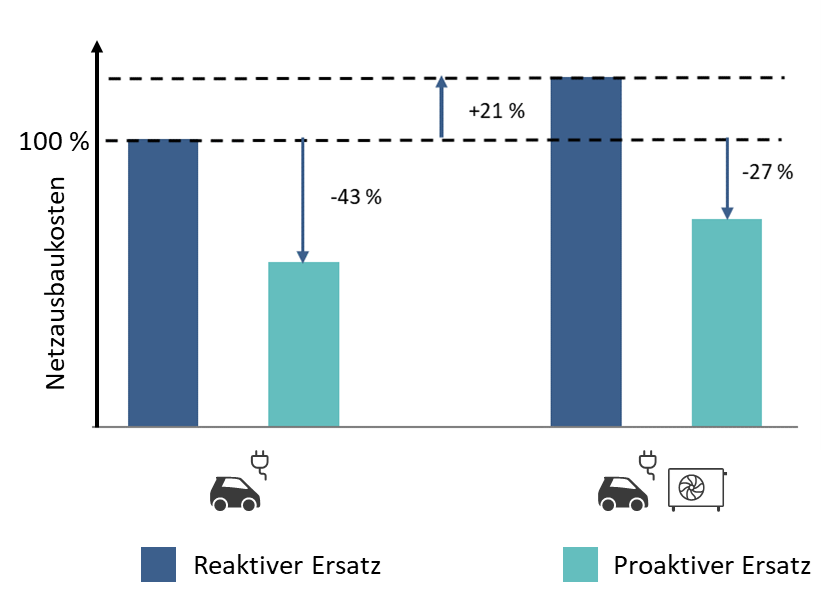Network expansion planning
Network expansion planning
Project name: the influence of eMobility and heatpumps as well as th “Osterpaket” on distribution networks
Commissioned by: E.ON SE
Timeframe: 2017-2024 (in multiple iterations)
Contact: Christian Linke

Beispielergebnis: Vergleich von reaktiver und proaktiver Ersatzstrategie [1]
The energy and transport transition is leading to changes in the structure of electricity consumption that will have a fundamental impact on the requirements of the electricity distribution grids and cause a considerable need for grid expansion. E.ON SE and its grid operators addressed this at an early stage and commissioned Consentec back in 2017 to analyse the impact of the of e-mobility in particular on the of the Group’s four DSOs at the time. Specifically, changes in supply tasks and the resulting utilisation of the grids, the need for action due to emerging current- or voltage-driven grid bottlenecks as well as suitable conventional and innovative measures and their costs were examined on the basis of models.
These analyses were then extended to all nine DSOs of the E.ON Group and expanded in several stages to include the effects of the expansion of heat pumps and the expansion of renewable energy generation in the distribution grids as well as the increasing availability of consumption-side flexibility. In addition, adjustments to energy policy objectives such as the increase in renewable energy targets with the Easter Package 2022 were taken into account in further stages of the study.
Tools were developed for the model investigations that allow an automated analysis of type grids with a modelling accuracy that is sufficient for basic planning but can be realised with a reasonable amount of data for the entirety of the medium and low-voltage grids in the nine grid areas. Other key areas of analysis and challenges in the development of the model concerned the behaviour of electric car charging points the design and application characteristics of heat pumps and the possibilities of using consumption-side flexibility to relieve grid bottlenecks.
One exemplary aspect of the study concerned the comparison of reactive and proactive strategies in the planning of replacement measures for existing grids in connection with necessary capacity expansions. It has been shown that proactive strategies are significantly more cost-effective, regardless of whether only the effects of e-mobility or also those of heat pump expansion are taken into account.
Interim results of this series of analyses have been reported in two publications: